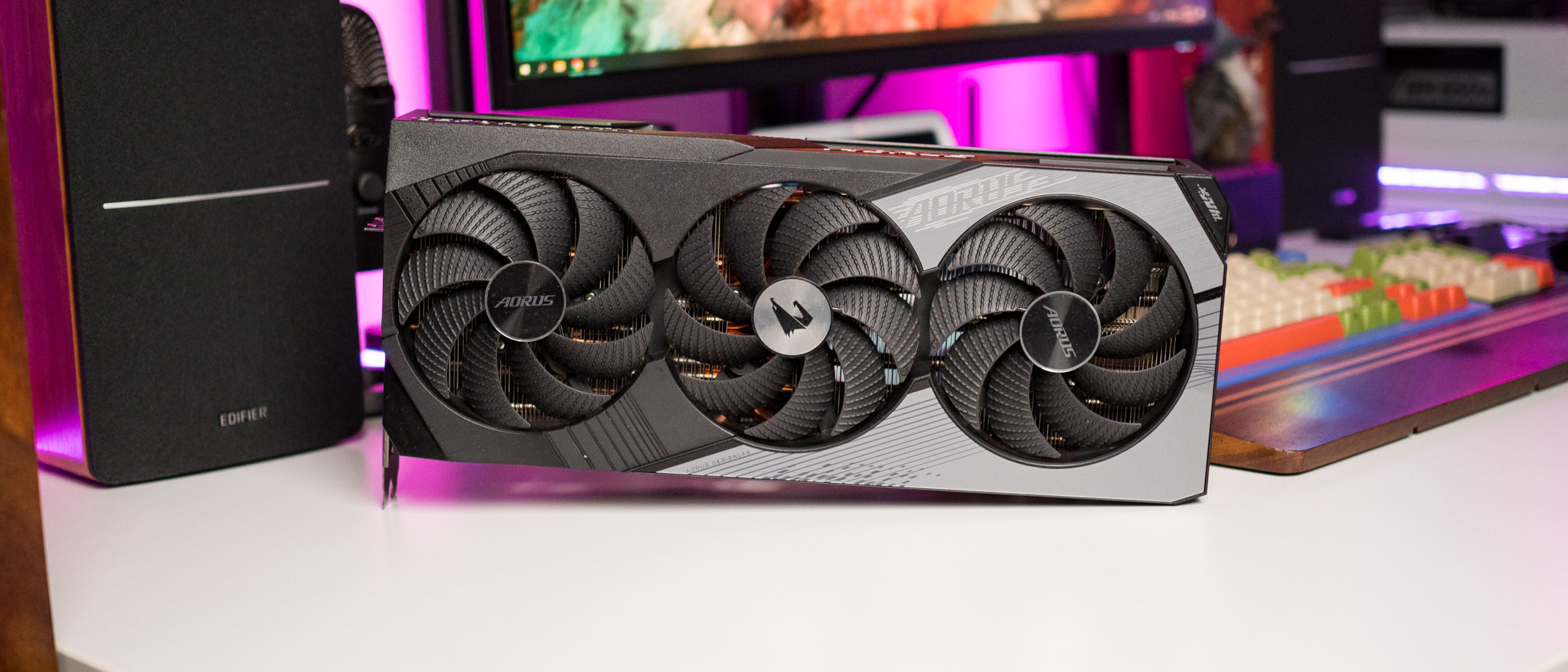Windows Central Verdict
The RTX 4070 Ti is an interesting card in the context of the broader RTX 40 series. It isn't as powerful as the RTX 4080 at 4K gaming, but it offers significant performance gains over the RTX 3070 Ti and even the 3080 and delivers much better efficiency figures. You also get the latest additions like DLSS 3 and AV1 encoding. While it costs a lot more than its predecessor, it is still the best value in the RTX 40 series thus far — provided you can get it for $800.
Pros
- +
Huge performance gains across the board
- +
DLSS 3 is a big differentiator
- +
Consumes less energy than previous generation
- +
Stellar cooling potential
- +
AV1 decode/encode
Cons
- -
Significantly costlier than previous generation
- -
Limited memory bus width isn't ideal for 4K
Why you can trust Windows Central
The GPU shortages over the last two years have normalized high prices, and while inventory has stabilized in recent months, it's evident that we're not going back to 2019-level pricing. That's been the case with the RTX 4090 and RTX 4080, and while NVIDIA positioned the XX70 series as a mid-range offering in the past, the RTX 4070 Ti starts off at $800, with most AIB cards selling it for closer to $900.
So like the rest of the RTX 40 offerings, you'll be paying a premium to get your hands on the RTX 4070 Ti. The card retails for 33% more than the RTX 3070 Ti, which at the time was considered to have an inflated price tag. Clearly, NVIDIA is positioning the RTX 40 series in a new price bracket over its predecessors, and while we may still get budget-focused cards sometime down the line, that is still some ways off.
If NVIDIA had its way, the RTX 4070 Ti would have launched as the 12GB version of the RTX 4080 for $900, but thankfully that plan has been abandoned. With the RTX 4070 Ti now available for $00, let's take a look at what you're getting with NVIDIA's latest card, and whether it makes sense to upgrade.
AORUS GeForce RTX 4070 Ti: Pricing and availability
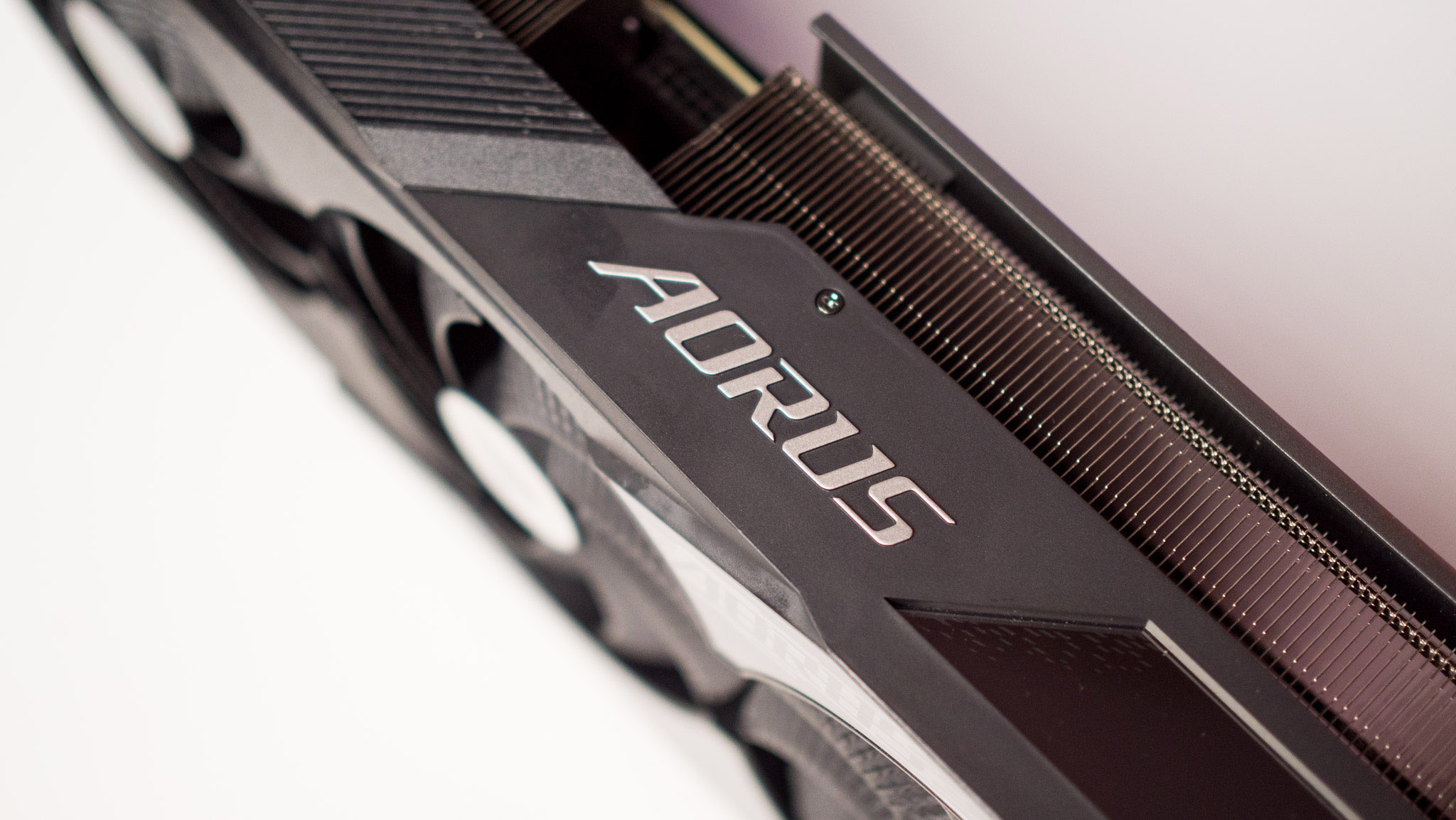
NVIDIA unveiled the RTX 4070 Ti on January 4, 2023, and the card went on sale the same day across the world. Unlike the rest of the RTX 40 series, NVIDIA isn't offering a Founders Edition of the RTX 4070 Ti, instead relying on its partners like Zotac, ASUS, MSI, Gigabyte, Colorful, PNY, Galax, and Inno3D to sell the card.
The RTX 4070 Ti starts off at $800 for the base version, and most brands offer factory overclocked models that are in the vicinity of $900. I'm reviewing Gigabyte's Aorus GeForce RTX 4070 Ti Master 12G, and this variant costs $999 — just $200 less than the full-fledged RTX 4080. The upside is that you get a four-year warranty provided you register the card with Aorus.
AORUS GeForce RTX 4070 Ti: Hardware overview
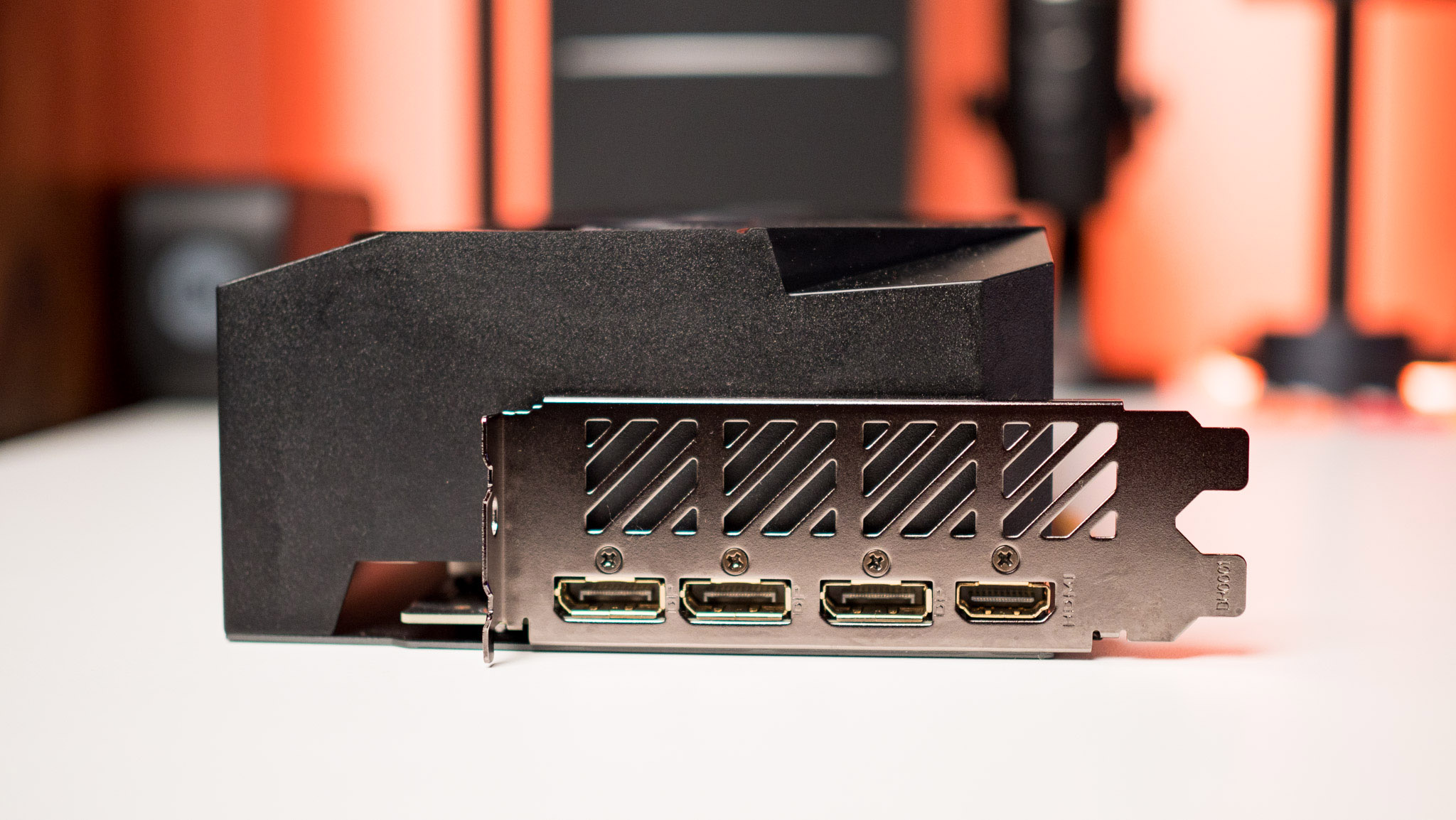
The RTX 4070 Ti is the third launch in the RTX 40 series, and while it is technically a rebranded RTX 4080, it uses the AD104 silicon that has 7,680 cores — 21% less than the RTX 4080. It comes with 12GB of GDDR6X memory over a bus width of 192-bit, leading to overall bandwidth of 540GB/s. That's significantly less than the RTX 3080, but NVIDIA offset the difference by making changes to the memory sub-system with the Ada Lovelace architecture.
NVIDIA is using the 12+4 pin 12VHPWR connector here as well, and the card has a TDP of 285W. If you're using PCIe 8-pin cables, there's a bundled adapter that lets you plug in two 8-pin cables to the 12VHPWR connector. You get the same set of ports as the rest of the series, including three DisplayPort 1.4a and one HDMI 2.1a port. There's hardware-level AV1 decode/encode, and like the RTX 4090 and 4080, the 4070 Ti is built on TSMC's custom 4N manufacturing node.
I'm not going into the architecture details here, but at a high-level overview, the Ada Lovelace generation introduces new cores across the board, offering better shading and ray tracing, and thanks to the node shift to 5nm, you get a sizeable boost in efficiency figures. Head to my Colorful RTX 4080 review for more details on the architecture.
Here's a rundown of the hardware, and how the RTX 4070 Ti is positioned in the RTX 40 series:
| Category | GeForce RTX 4090 | GeForce RTX 4070 Ti | GeForce RTX 4080 | GeForce RTX 3080 |
|---|---|---|---|---|
| GPU | AD102 | AD104 | AD103 | GA102 |
| Cores | 16384 | 7680 | 9728 | 8704 |
| ROPs | 176 | 80 | 112 | 96 |
| TFLOPS | 82.6 | 40.09 | 48.7 | 29.77 |
| Core Clock | 2235MHz | 2310MHz | 2205MHz | 1440MHz |
| Boost Clock | 2520MHz | 2670MHz | 2505MHz | 1710MHz |
| Memory | 24GB GDDR6X | 12GB GDDR6X | 16GB GDDR6X | 10GB GDDR6X |
| Memory Bus Width | 384-bit | 192-bit | 256-bit | 320-bit |
| Bandwidth | 1008GB/s | 504.2GB/s | 716GB/s | 760GB/s/s |
| Transistors | 76.3 billion | 35.8 billion | 45.9 billion | 28.3 billion |
| TDP | 450W | 285W | 320W | 320W |
| Process Node | TSMC 4N, 5nm | TSMC 4N, 5nm | TSMC 4N, 5nm | Samsung LSI 8nm |
| Price | $1,599 | $799 | $1,199 | $699 |
AORUS GeForce RTX 4070 Ti: Design
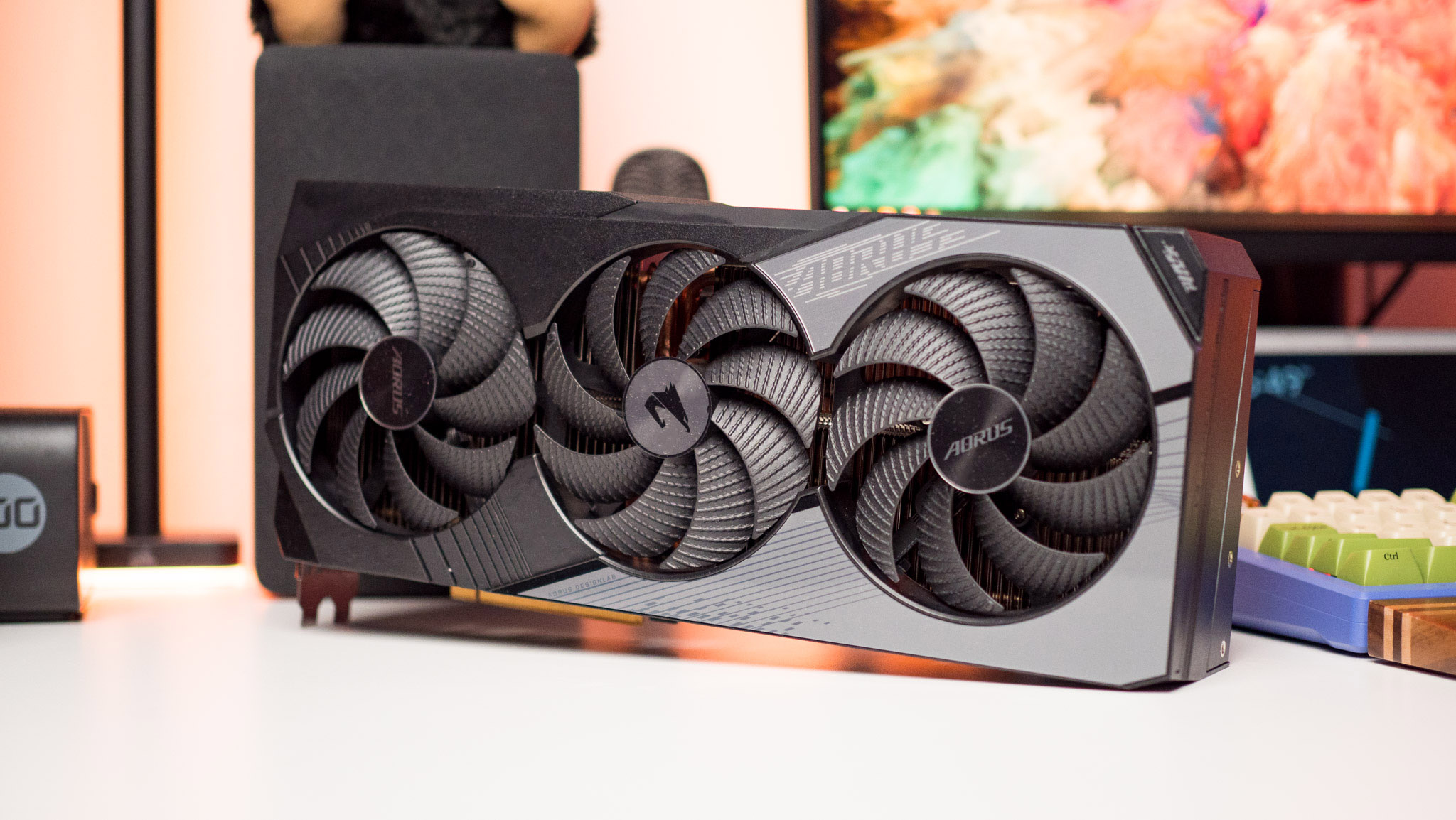
Like the rest of the RTX 40 series, the RTX 4070 Ti is absolutely massive, and the card has a three-slot design. It should fit just fine in most mid-tower cases, and I had no issues slotting it in Corsair's massive 5000T chassis. While Zotac went with a curvy design with its RTX 40 series offerings, Gigabyte retained a tried-and-tested aesthetic for its Aorus-branded RTX 4070 Ti Master 12G, with the card touting flat sides and a standard black color scheme.
That said, the grey accents throughout add a bit of character, and as this is the costlier of the two options that Gigabyte has introduced for the 4070 Ti, it gets all the extras, including a small LCD panel with real-time monitoring info. You can customize the screen to show text, pictures, or GIFs via Gigabyte's software.

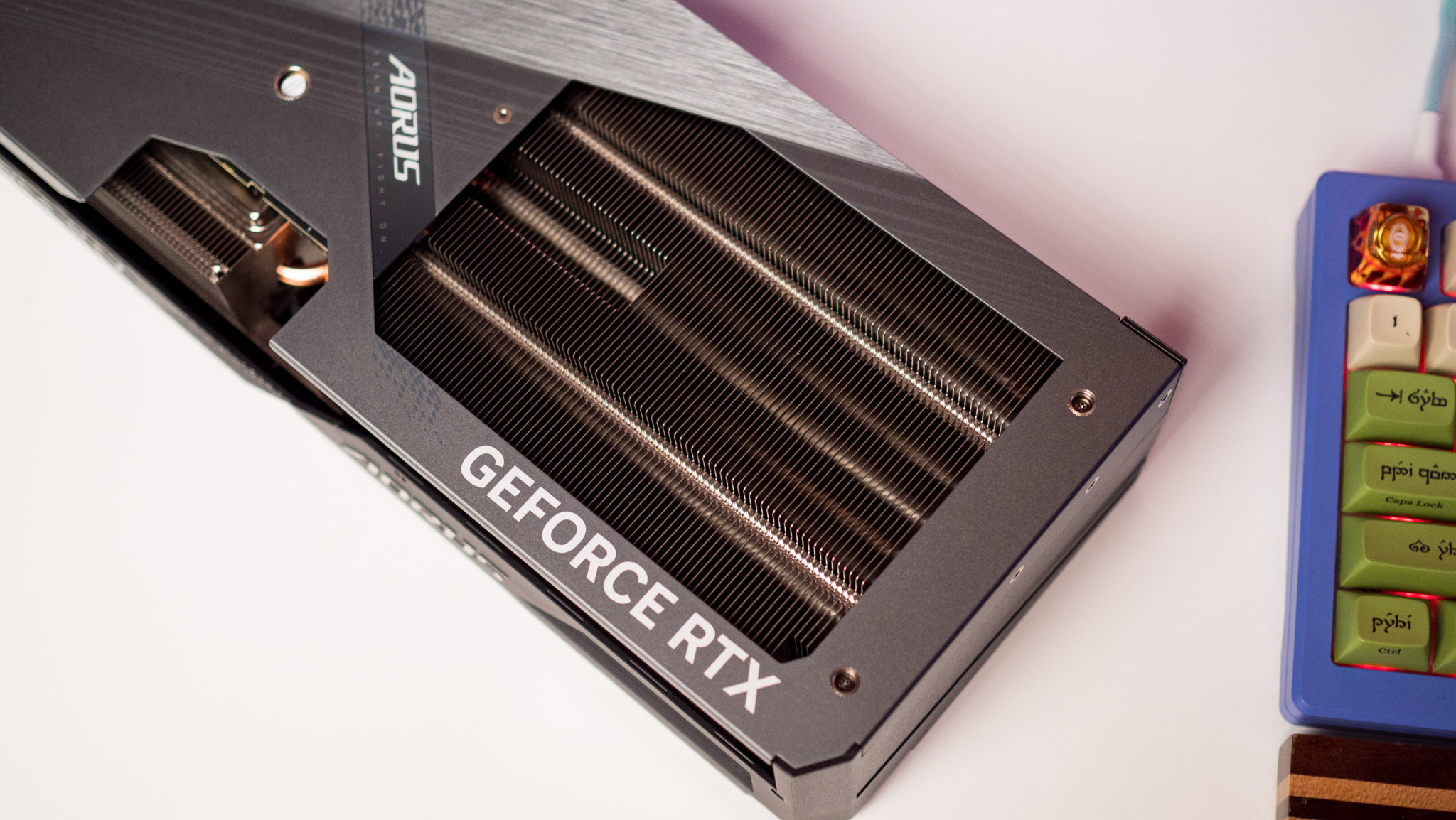
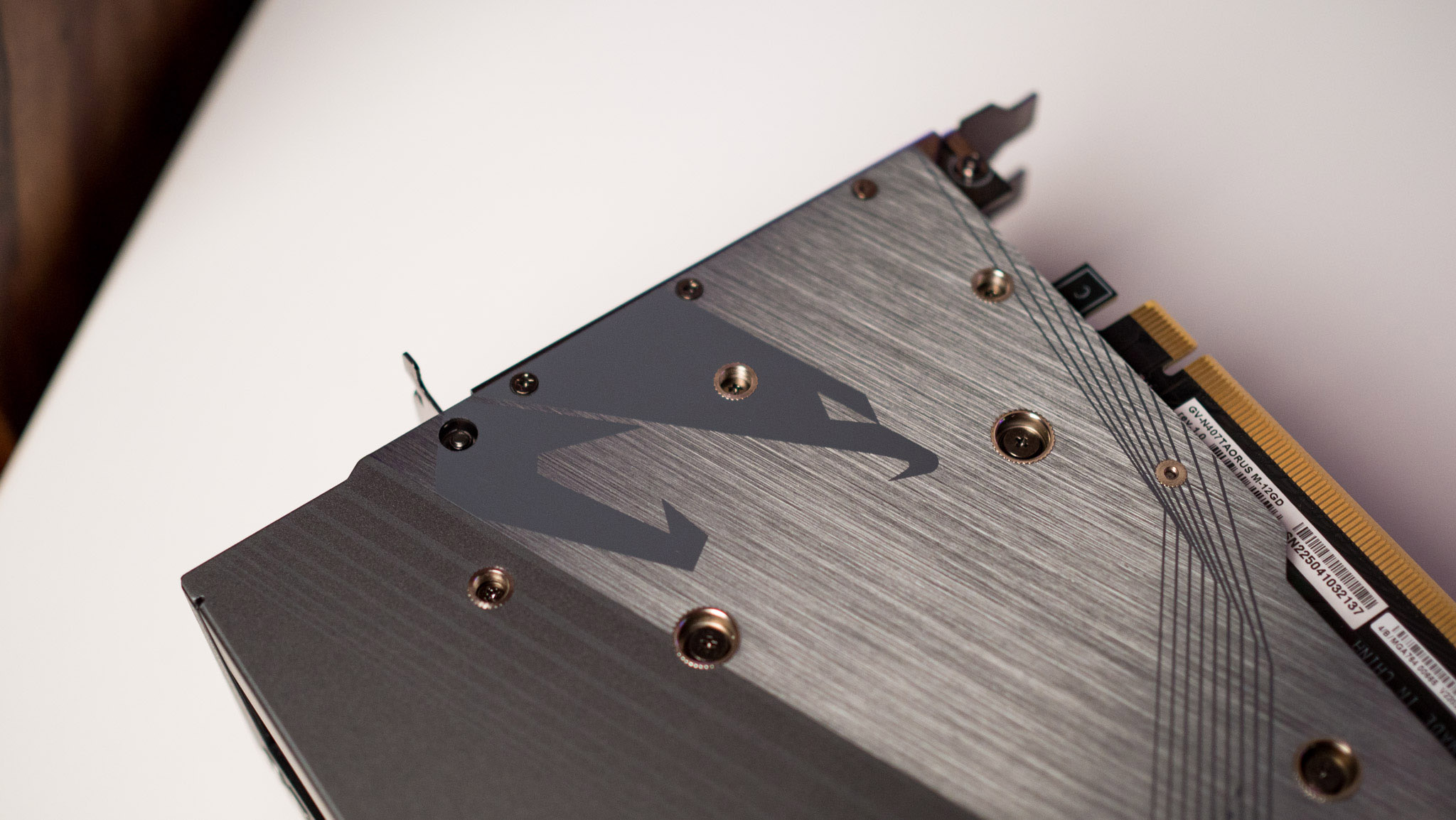
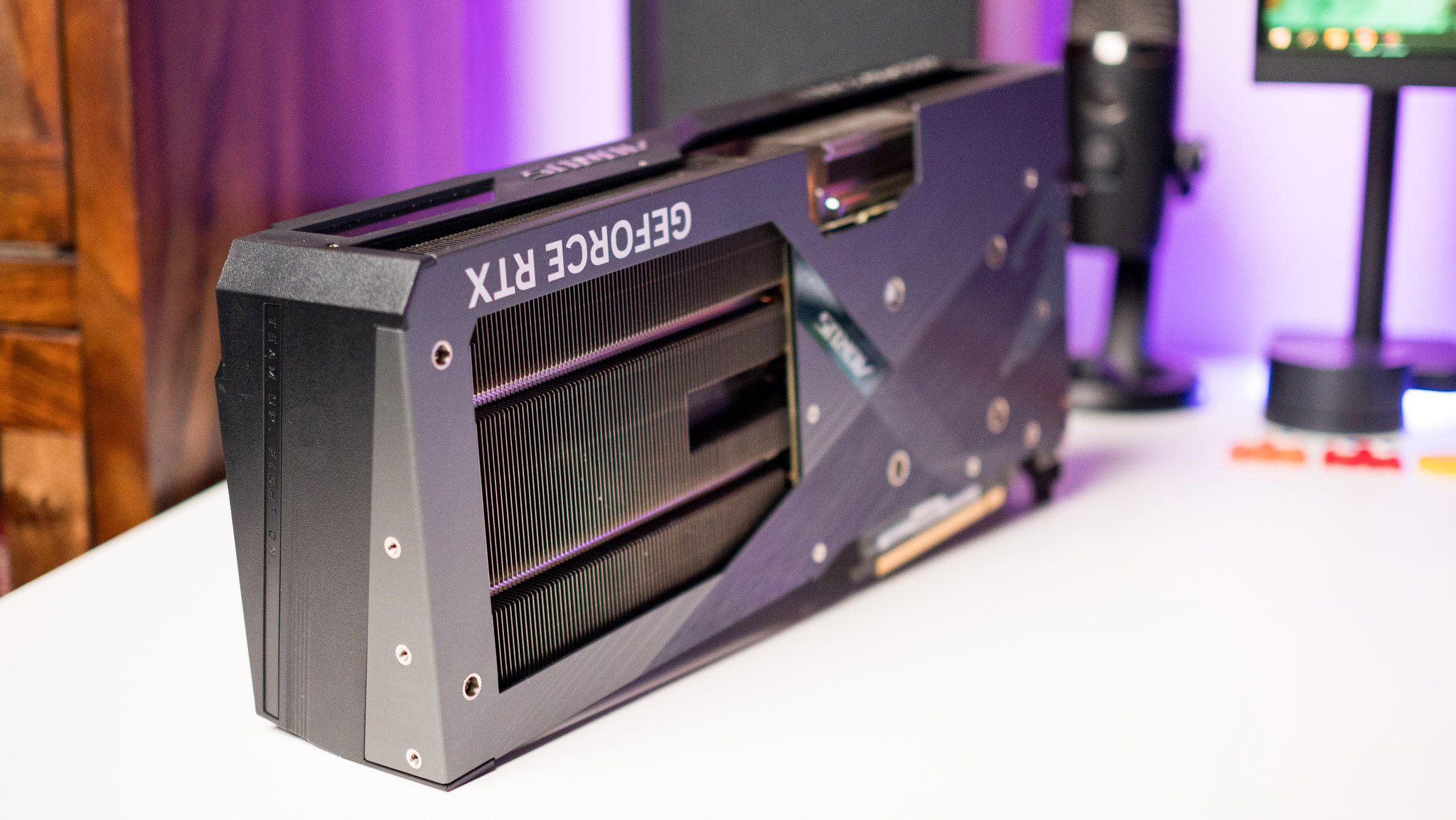
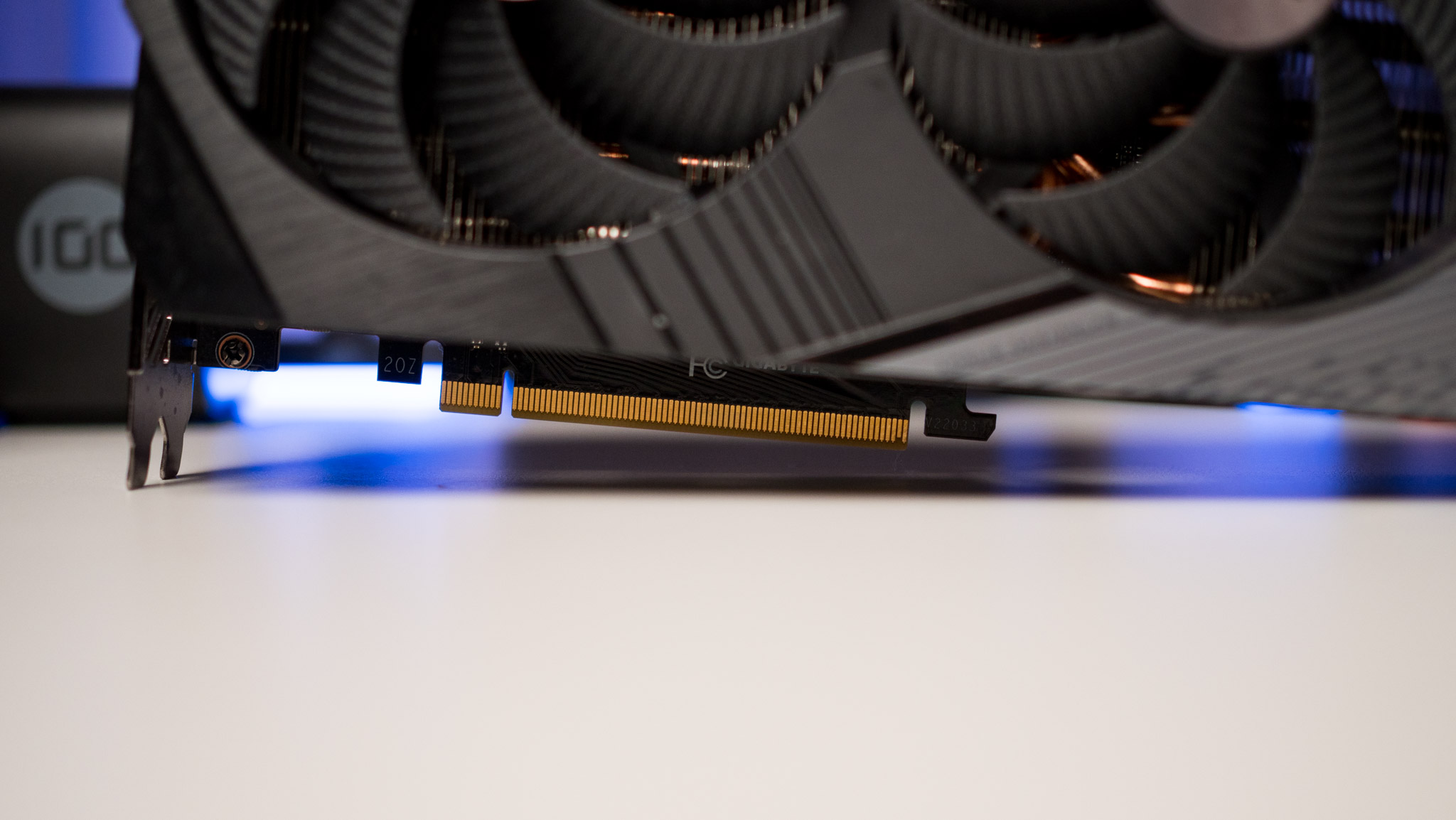

The card is hefty at just over 3.5lb (1.6kg), but the aluminum backplate does a good job ensuring it doesn't sag — you'll also find a bracket in the box that can be used to reinforce it. There are three Windforce fans that deliver excellent airflow, and the heatsink has fans of varying sizes to maximize surface area.
Like the other RTX 40 cards, the 4070 Ti has a vented design to one side to allow air to flow through the PCB, and the design allows for optimal airflow to all parts of the card. Overall, Gigabyte hasn't moved the needle too much on the design front, and that's just fine — the RTX 4070 Ti Master 12G looks and feels like a high-end card.
AORUS GeForce RTX 4070 Ti: Efficiency and performance
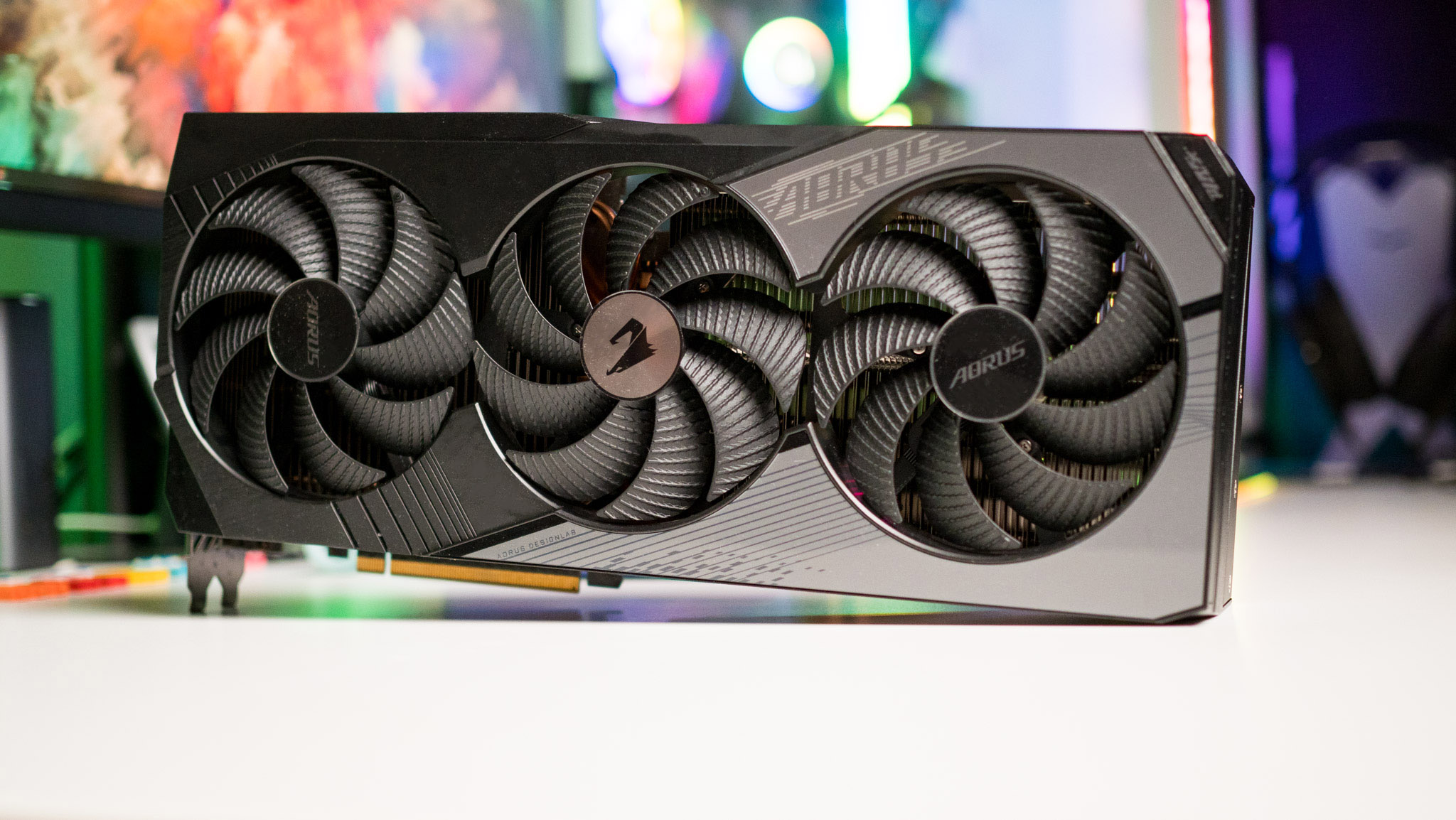
The RTX 4070 Ti Master 12G is an overclocked model, although there's just a modest 60MHz increase over the standard RTX 4070 Ti. I'll get to how it fares against its siblings in the RTX 40 series and older cards in a moment, but first, a note on efficiency. NVIDIA switched to TSMC's 4N node, a custom version of the foundry's 5N family that's based on 5nm.
The switch to a more efficient node (the 3070 Ti was built on Samsung's 8nm node) allows the RTX 4070 Ti to deliver stellar efficiency gains over its predecessor, particularly under load. The card consumed just 15W of power while idling, going up to 22W for video playback and 272W under full load. It went up to a maximum of 298W, close to its power limit of 300W.
The efficiency figures paint a better picture when you consider that the RTX 4070 Ti delivers an equivalent level of performance at 1080p and 1440p as the RTX 3090 Ti while drawing just over half as much power. In fact, the 4070 Ti is the outright leader with regard to performance/price numbers, besting its RTX 40 siblings and every other card from the RTX 30 series. It is the best overall GPU from NVIDIA in this particular regard.
| Category | GeForce RTX 4080 | GeForce RTX 4070 Ti | GeForce RTX 3080 | GeForce RTX 3090 Ti |
|---|---|---|---|---|
| Assassin's Creed Valhalla | 92.7 | 72.1 | 54.4 | 66.8 |
| Borderlands 3 | 92.5 | 82.8 | 75.2 | 88.7 |
| Control | 93.2 | 70.4 | 58.4 | 75.8 |
| Cyberpunk 2077 | 59.6 | 45.2 | 37.6 | 48.4 |
| Elden Ring | 92.7 | 74.2 | 63.1 | 79.8 |
| Far Cry 6 | 112.7 | 89.7 | 84.8 | 98.0 |
| F1 22 | 192.1 | 151.2 | 128.6 | 160.4 |
| Halo Infinite | 94.7 | 73.8 | 61.5 | 74.8 |
| Metro Exodus | 143.7 | 121.9 | 94.8 | 126.6 |
| Red Dead Redemption 2 | 88.4 | 71.3 | 62.2 | 77.5 |
| Watch Dogs Legion | 85.4 | 63.4 | 56.1 | 68.8 |
The limited 192-bit hobbles the RTX 4070 Ti when it comes to 4K gaming, but the card still has decent gains over the RTX 3080, delivering figures roughly 15% higher in most titles.
The 3090 Ti manages to hold on to a slender lead in this regard, but that's the only card in the RTX 30 series that does so. I didn't include figures of the 3070 Ti here because the 4070 Ti is anywhere between 35 to 39% faster than its predecessor, and given what NVIDIA is asking for the card, it made more sense to pit it against the RTX 3080 instead.
| Category | GeForce RTX 4080 | GeForce RTX 4070 Ti | GeForce RTX 3080 | GeForce RTX 3090 Ti |
|---|---|---|---|---|
| Assassin's Creed Valhalla | 136.8 | 104.6 | 86.7 | 98.8 |
| Borderlands 3 | 171.8 | 148.2 | 102.4 | 146.7 |
| Control | 168.9 | 139.3 | 109.1 | 141.3 |
| Cyberpunk 2077 | 116.5 | 98.7 | 74.6 | 96.4 |
| Elden Ring | 129.4 | 115.2 | 93.3 | 106.7 |
| Far Cry 6 | 126.8 | 115.8 | 90.5 | 106.2 |
| F1 22 | 271.8 | 248.5 | 194.7 | 238.2 |
| Halo Infinite | 148.5 | 129.1 | 91.4 | 122.7 |
| Metro Exodus | 233.8 | 195.5 | 158.6 | 192.5 |
| Red Dead Redemption 2 | 122.7 | 95.2 | 85.3 | 98.1 |
| Watch Dogs Legion | 129.4 | 113.6 | 91.3 | 106.1 |
It's at 1440p gaming where the RTX 4070 Ti truly comes into its own, delivering 18 to 20% better performance than the RTX 3080. But what's particularly interesting is that the card is able to measure up to the RTX 3090 Ti in this regard.
This is the ideal card in NVIDIA's RTX 40 series portfolio if you're interested in gaming on a high refresh rate QHD monitor. It's about 19% slower on average versus an RTX 4080, but in terms of value, you are getting a better deal with the 4070 Ti.
| Category | GeForce RTX 4080 | GeForce RTX 4070 Ti | GeForce RTX 3080 | GeForce RTX 3090 Ti |
|---|---|---|---|---|
| Control | 58.2 | 37.3 | 34.2 | 41.3 |
| F1 22 | 62.3 | 46.2 | 38.5 | 51.1 |
| Far Cry 6 | 86.2 | 72.7 | 62.8 | 79.8 |
| Metro Exodus | 92.8 | 66.2 | 51.3 | 70.6 |
The RTX 4070 Ti does a decent enough job with ray tracing enabled, and while it clearly outshines the RTX 3080 and comes close to the 3090 Ti, it is still some ways behind the RTX 4080. NVIDIA clearly intended for such a wide gulf between the two products given the difference in cost, and the 4070 Ti would have been a lot more enticing if it wasn't needlessly limited by the hardware.
That said, you get DLSS 3 Frame Generation here, and it makes a noticeable difference in titles. Sure, there aren't many games that work with the feature, but in titles like Cyberpunk 2077, you'll find a marked uptick in visual fidelity at the same framerates.
AORUS GeForce RTX 4070 Ti: The alternatives

AMD's Radeon RX 7900 XT is a suitable alternative to the RTX 4070 Ti, with the card delivering better figures in just about every game. With 20GB of video memory on offer, you're not likely to run into any limitations on that front either. The 7900 XT doesn't do as well in terms of ray tracing, but if you're after pure rasterization, it ticks a lot of the right boxes for $899.
If you need a beefier card to pair with a 4K monitor, the RTX 4080 is the way to go. It costs a lot more than the 4070 Ti and isn't as good a value, but it is phenomenal for 4K gaming.
AORUS GeForce RTX 4070 Ti: Should you buy it?
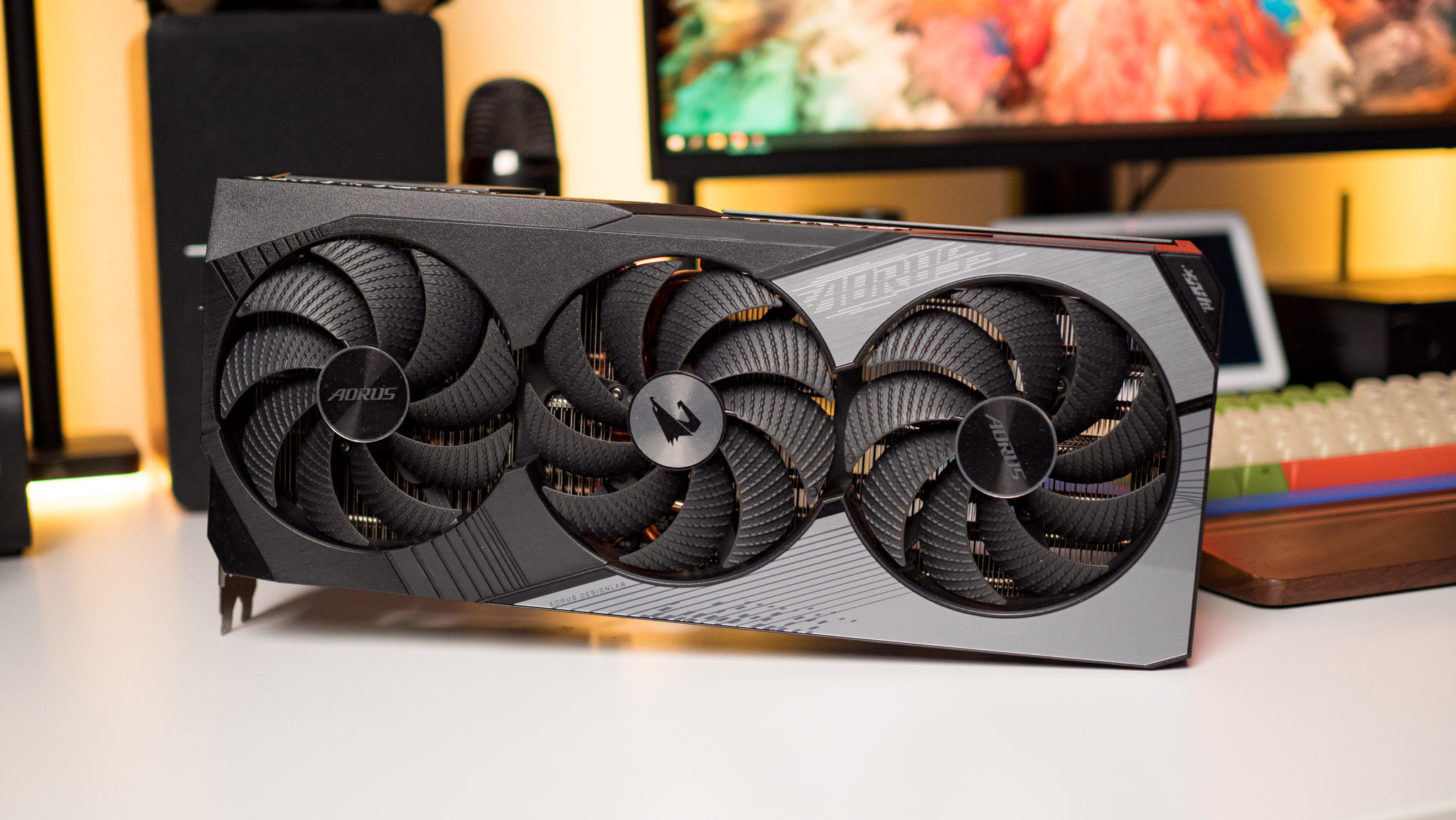
You should buy this if:
- You want the best value in the RTX 40 series
- You need a card for under $1,000 that's the best at QHD gaming
- You need an energy-efficient card
- You want to make the most out of DLSS 3.
You shouldn't buy this if:
- You're interested in 4K gaming
- You want a mid-range card
There's no question that the RTX 4070 Ti delivers incredible gains in all areas over its predecessor. Although the RTX 40 series has inflated pricing across the board, the 4070 Ti coming in at $800 is good value when you account for the fact that it costs 33% more than the 3070 Ti while offering nearly double the gains.
If you can get your hands on the 4070 Ti in the vicinity of $800, you're still getting the best value in the RTX 40 series. I found a PNY 4070 Ti going for $829 and Gigabyte's 4070 Ti Gaming OC down to $819 at Newegg, but for the most part, you're likely to shell out $849 or $900. In a few cases like this Aorus Master 12G, you're looking at $999, and some AIB cards even go up to $1,049.
That's a ridiculous amount of money for a card that was traditionally aimed at the mid-range tier, but that's the way the entire industry is moving, and it's unlikely we'll get $500 - $600 cards for a while. So if you're thinking of maximizing value, your best bet would be an RTX 3070 for $549. Sure, it doesn't come close to the 4070 Ti, but it is still a decent choice for QHD gaming.
For anything over $900, you're better off holding out for a discount on the full-fledged RTX 4080 instead. There are already a few deals available, with the likes of Zotac's Trinity OC model selling for $1,199 — $100 off its launch price. I know that's not a lot, but the fact that these cards are selling for retail is a big deal in and of itself. The standard RTX 4080 has 16GB of video memory and a 320-bit wide bus, and while you are paying more, you are getting a much better product overall.
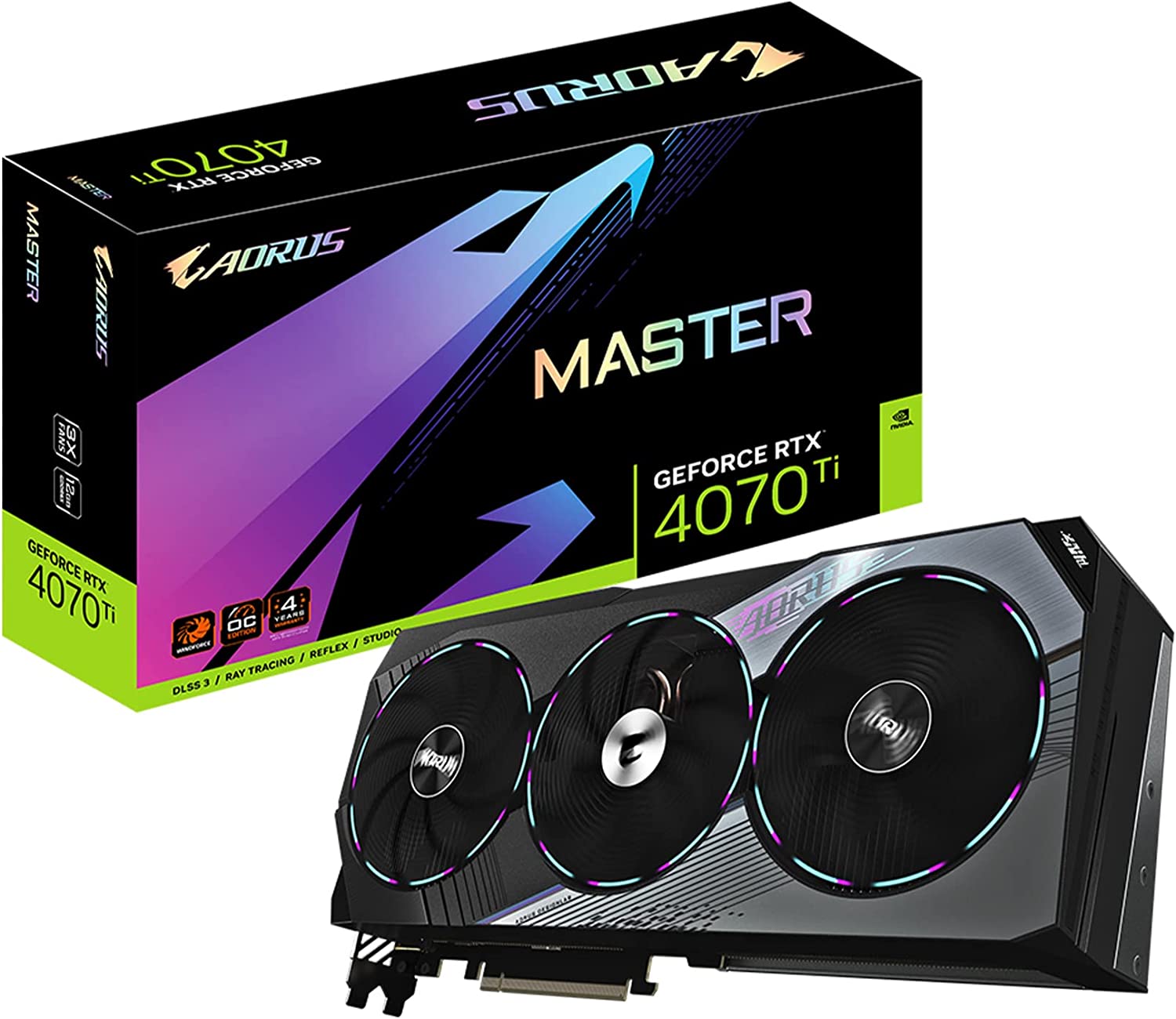
The RTX 4070 Ti has sizeable gains over the RTX 30 series, and is the ideal choice for QHD gaming. It gives you access to all the latest features NVIDIA introduced in the RTX 40 series, and you get excellent efficiency figures. As long as you're not shelling out over $850, this is the card to get.

Harish Jonnalagadda is a Senior Editor overseeing Asia for Android Central, Windows Central's sister site. When not reviewing phones, he's testing PC hardware, including video cards, motherboards, gaming accessories, and keyboards.
